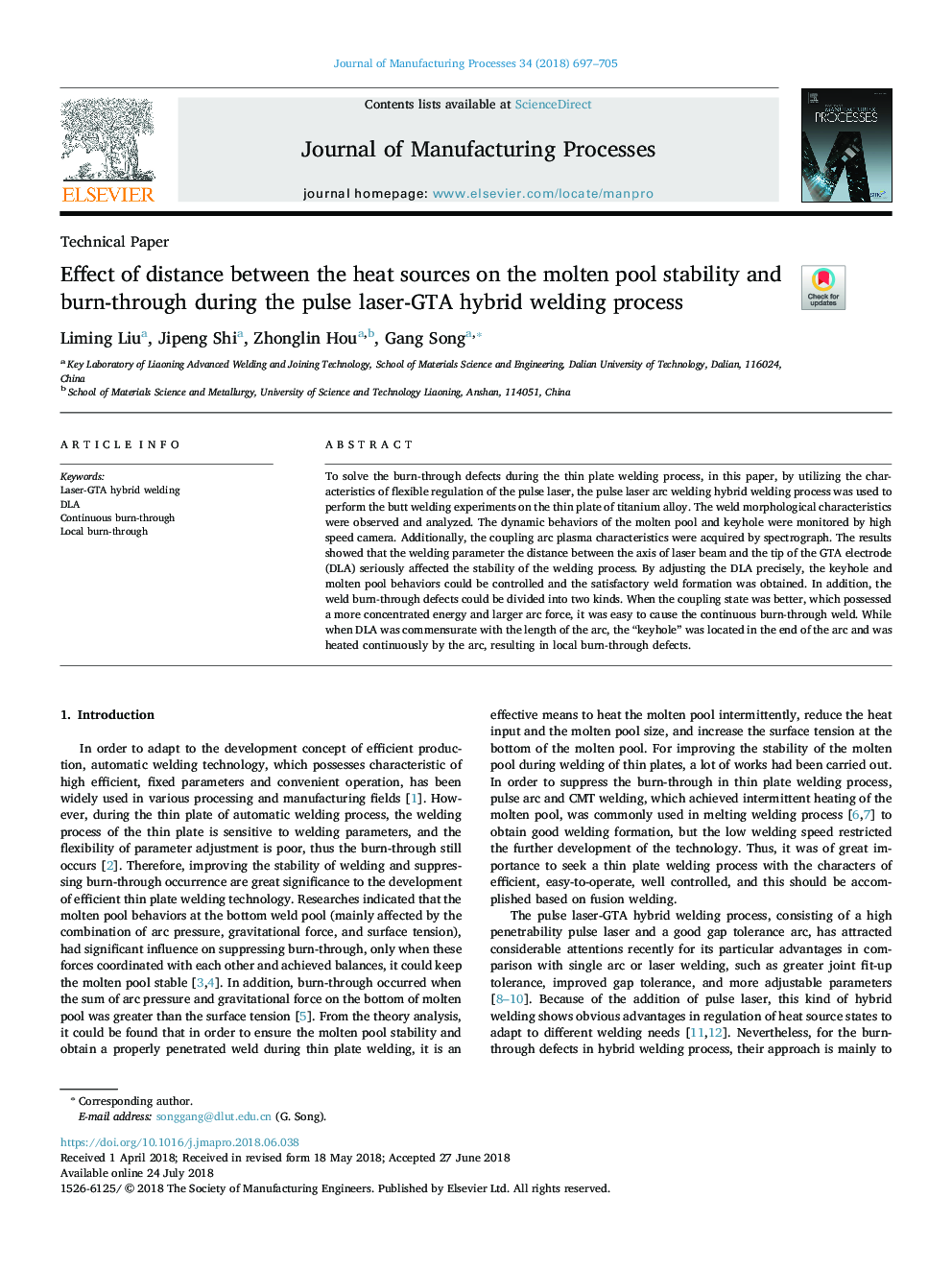| Article ID | Journal | Published Year | Pages | File Type |
|---|---|---|---|---|
| 8047962 | Journal of Manufacturing Processes | 2018 | 9 Pages |
Abstract
To solve the burn-through defects during the thin plate welding process, in this paper, by utilizing the characteristics of flexible regulation of the pulse laser, the pulse laser arc welding hybrid welding process was used to perform the butt welding experiments on the thin plate of titanium alloy. The weld morphological characteristics were observed and analyzed. The dynamic behaviors of the molten pool and keyhole were monitored by high speed camera. Additionally, the coupling arc plasma characteristics were acquired by spectrograph. The results showed that the welding parameter the distance between the axis of laser beam and the tip of the GTA electrode (DLA) seriously affected the stability of the welding process. By adjusting the DLA precisely, the keyhole and molten pool behaviors could be controlled and the satisfactory weld formation was obtained. In addition, the weld burn-through defects could be divided into two kinds. When the coupling state was better, which possessed a more concentrated energy and larger arc force, it was easy to cause the continuous burn-through weld. While when DLA was commensurate with the length of the arc, the “keyhole” was located in the end of the arc and was heated continuously by the arc, resulting in local burn-through defects.
Keywords
Related Topics
Physical Sciences and Engineering
Engineering
Industrial and Manufacturing Engineering
Authors
Liming Liu, Jipeng Shi, Zhonglin Hou, Gang Song,
